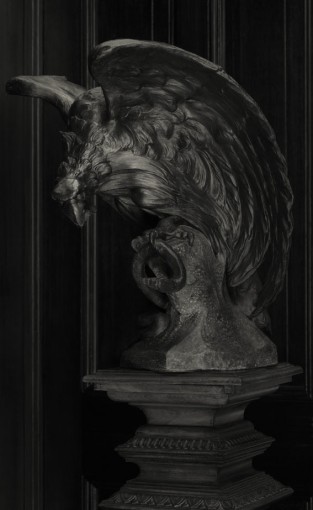The ‘Dusk’ & ‘Dawn’ series are divided into two sections, each with a different source of inspiration.
‘Dusk’ was originally commissioned by The Museum of the City of New York and inspired by Frances B. Johnston’s photographs depicting middle-class Native and African American students at a Virginian school in the 19th century. A leading female photographer of her time, Johnston was commissioned to photograph the students for the ‘Exposition Universelle’ in Paris in 1900. The pictures were met with critical acclaim, both for their documentary excellence and artistic merit. The history of these photographs gives profound insight into the evolution of race relations in the U.S. Olaf’s series takes aesthetic inspiration from Johnston’s pictures, opting to place middle-class African Americans in a 20th century setting. His subjects are dignified and surrounded by opulent décor. However, they do not appear any more liberated than the struggling communities photographed by Johnston.
In direct contrast and partly in response to ‘Dusk’, Olaf later created ‘Dawn’, which focused more on form than colour. This series which was inspired by a trip to Moscow where Olaf came across a fair-skinned, blonde Russian family interacting in a room decorated in pale, muted colours. Olaf immediately envisioned the Dusk series reversed in a white-on-white setting, thus resulting in a mirrored version of ‘Dusk’. The interplay between the two series is both aesthetically and culturally divergent.
















